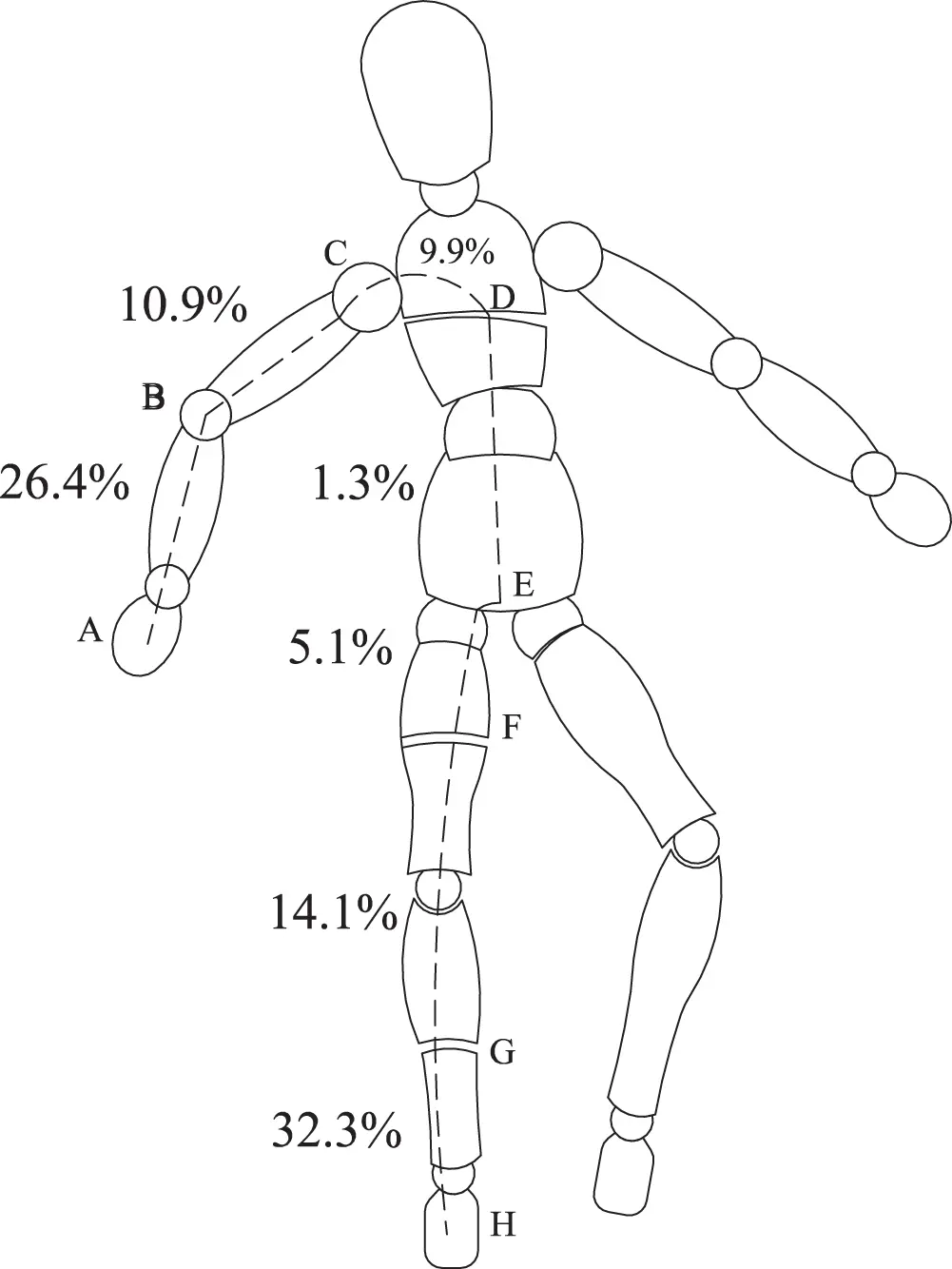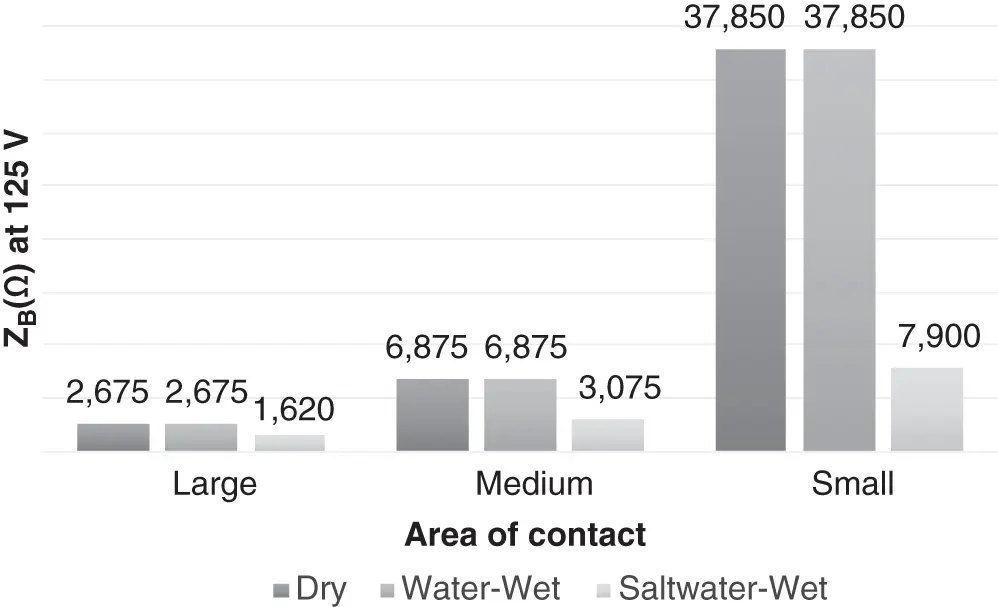
Figure 1.4 Current response of human body to d.c. voltage.
When the d.c. touch voltage occurs, the capacitances C sare not charged, and become short-circuits during the initial transient, bypassing the contact resistances R cs; therefore, the ratio of the touch voltage V to the current peak equals R Bi. After the transient expires, the capacitances of the skin become an open circuit, and the current reaches the steady-state value of V /(R Bi+2R cs), where the denominator is the total body resistance.
The impedance of the skin is the primary barrier against the flow of the body current, providing that the voltage is not high enough to puncture it (i.e., below 200 V), and the skin is not wet. Voltages greater than 200 V exceed the dielectric strength of the skin, C s“fails” and short-circuits the contact resistance R cs, reducing the resistance of the human body to R Bi: the body current can cause greater damages to the internal organs.
In addition, at 50/60 Hz, the capacitive reactance of the skin is practically an open circuit, and Z B≈R Bi+2R cs.
1.3.1 The Internal Resistance of the Human Body
R Biin Figure 1.3 represents the internal resistance of the human body, which depends on the chosen current pathway [16]. IEC 60479-1 expresses the resistance R iof different segments of the body, ignoring the skin contribution at 50/60 Hz, as a percentage of the internal resistance of the human body related to the path hand-to-foot (Figure 1.5).

Figure 1.5 Internal partial impedances of the human body (no skin contribution).
For example, the partial impedance of the trunk (i.e., segment D-E) is only 1.3% of the total body impedance hand-to-foot, due to large amount of conductive fluids normally present in the trunk.
The resistance Ri of the segment are determined as Ri = ρl/S , where is the segment tissue mean resistivity, l the mean length of the segment, and S its mean cross-sectional area. The cross-sectional area of the body segment plays a crucial role in determining its resistance: fingers and joints, such as elbow and knee, have higher resistance values due to their relatively small cross-sectional areas, even though they are made of well-conductive tissues.
The resistance Ri of the segment are determined as Ri = ρl/S , where is the segment tissue mean resistivity, l the mean length of the segment, and S its mean cross-sectional area. The cross-sectional area of the body segment plays a crucial role in determining its resistance: fingers and joints, such as elbow and knee, have higher resistance values due to their relatively small cross-sectional areas, even though they are made of well-conductive tissues.
The total body impedance for a given current path is obtained by adding the resistances Ri of the body segments for that path and the impedances of the skin at the surface areas of contact.
To underscore the role of the skin as the primary barrier against the flow of the body current, the US NIOSH 3states that “ under dry conditions, the resistance offered by the human body may be as high as 100,000 Ω. Wet or broken skin may drop the body’s resistance to 1,000 Ω ”.
IEC/TS 60479-1 affirms the variability of the body impedance ZB and body resistance RB related to the touch voltage, both a.c. (50/60 Hz) and d.c., and provides impedance values for the hand-to-hand pathway, in the case of dry skin and large contact areas (i.e., order of magnitude 100 cm 2), herein shown in Table 1.2.
Table 1.2 Body impedances and resistances for a current path hand-to-hand
|
ZB (Ω) |
RB (Ω) |
| Touch Voltage (V) |
5% |
50% |
95% |
5% |
50% |
95% |
| 25 |
1750 |
3250 |
6100 |
2100 |
3875 |
7275 |
| 50 |
1375 |
2500 |
4600 |
1600 |
2900 |
5325 |
| 150 |
850 |
1400 |
2350 |
875 |
1475 |
2475 |
| 200 |
800 |
1275 |
2050 |
800 |
1275 |
2050 |
| 225 |
775 |
1225 |
1900 |
775 |
1225 |
1900 |
| 400 |
700 |
950 |
1275 |
700 |
950 |
1275 |
| 500 |
625 |
850 |
1150 |
625 |
850 |
1150 |
| 1000 |
575 |
775 |
1050 |
575 |
775 |
1050 |
Table 1.2shows ZB and RB in the population percentile; for instance, for a touch voltage of 50 V, 95% of the population has an impedance of 4,600 Ω or less.
The body resistance for direct current (i.e., f = 0 ) is higher than the body impedance for alternating currents (i.e., f = 50/60 Hz) for touch voltages up to approximately 200 V, thanks to the blocking effect of the capacitances of the skin (i.e., they are open circuits at steady state); for a.c. contacts, the capacitances Cs are instead in parallel to the contact resistances Rcs .
For durations of current flow longer than 0.1 s, the skin will rupture, and ZB approaches RB .
The total body impedance ZB depends on the area of contact with the energized part. Surface areas of contact are defined as large , medium , and small , with order of magnitude respectively of 100 cm 2, 10 cm 2, and 1 cm 2, and characterized by dry, water-wet, and saltwater-wet conditions.
In Figure 1.6, values of impedances not exceeded by the 95% of population, for a current path hand-to-hand and for a 125 V touch voltage (a.c. 50/60 Hz), are shown as a function of the surface areas of contact.

Figure 1.6 Body impedances at 1250 V for a path hand-to-hand vs. the area of contact.
It can be observed that ZB increases with polynomial law when the area of contact decreases. For a given area of contact, no appreciable differences in ZB are present in dry and water-wet conditions for a touch voltage of 125 V.
The effect on ZB of the surface area of contact increases when the touch voltage decreases; this is because touch voltages exceeding 200 V may rupture the capacitance of the skin and short-circuit the contact resistance.
In sum, ZB is different from person to person and is dependent on several factors, including [17] but not limited to:
the touch voltage;
the supply frequency;
the duration of the current flow;
the conditions of wetness of the skin and surface area of contact;
the general environment.
The current i passing through the human body during the contact time t with an energized part produces a physiological damage due to the generation and transfer of heat, per the Joule effect, to the biological tissues. An electric burn is defined as the burning of the skin or of an organ caused by the flow of an electric current along its surface or through it. Electric burn injuries account for 4% to 6% of all admissions to burn-care facilities [18].
Читать дальше















